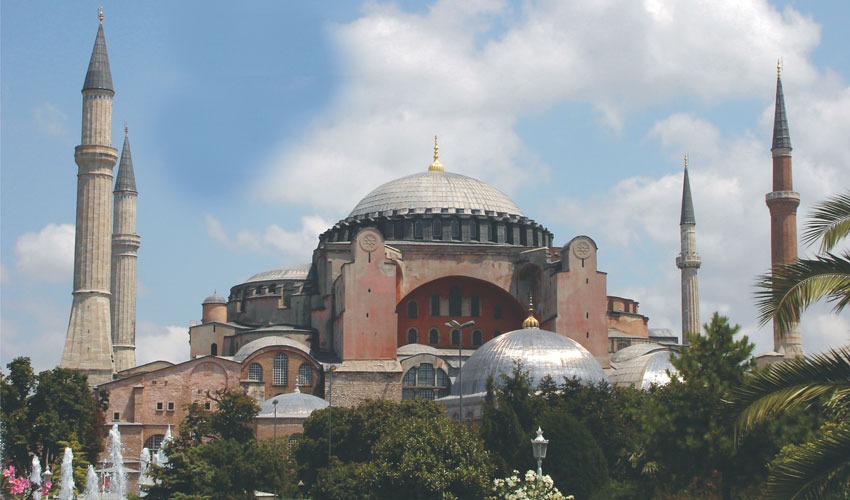
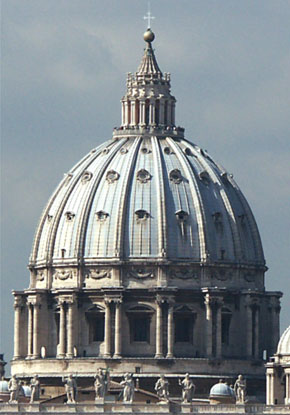
Domes are curved structures and have no angles, no corners—whereas they enclose a larger space without the help of a single column. Despite their thinness, domes are some of the strongest and stiffest structures in existence today.
Domes are an extremely stable form of construction and are said to be highly resistant to most types of storms. The Dome shape has inherent strength that exceeds all other structural designs as proven. It is designed to withstand the powerful forces of nature and structural storm damage as a result of the ravages of tornadoes, earthquakes, hurricane, and so on.
The Concept behind the Dome
Several structural shapes like rectangle, triangle and sphere had been tested to measure their resistant strength. It was found that the rectangle is a wobbly, unstable shape. When push the side, it flops into a slanted parallelogram. Triangle on the other hand when pokes from its top, the two sides squeeze together and the bottom side pulls apart. The triangle does not bend because each side experiences only one force at a time. Due to this property, triangle was the most stable and rigid shapes used in the construction that time. Later it was discovered that if a spherical structure was created from triangles, it would have unparalleled strength.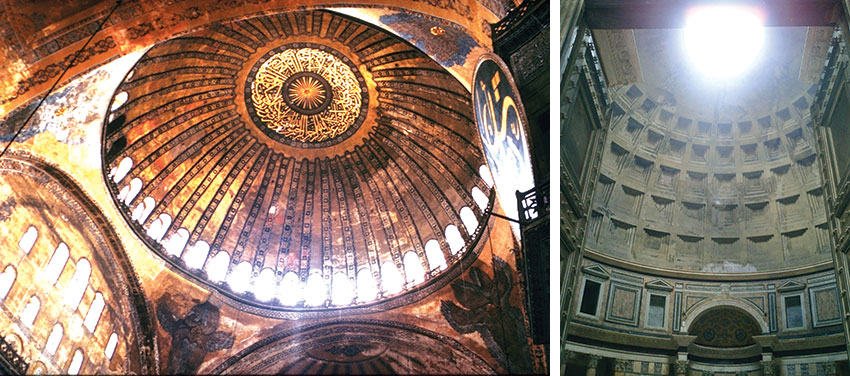
The sphere uses the "doing more with less," principle in that it encloses the largest volume of interior space with the least amount of surface area thus saving on materials and cost. Architect- Engineer Buckminster Fuller reintroduced the idea that when the sphere's diameter is doubled it will quadruple its square footage and produce eight times the volume. Hence, the spherical structure of a dome is one of the most efficient interior atmospheres for human dwellings because air and energy are allowed to circulate without obstruction. This enables heating and cooling to occur naturally.
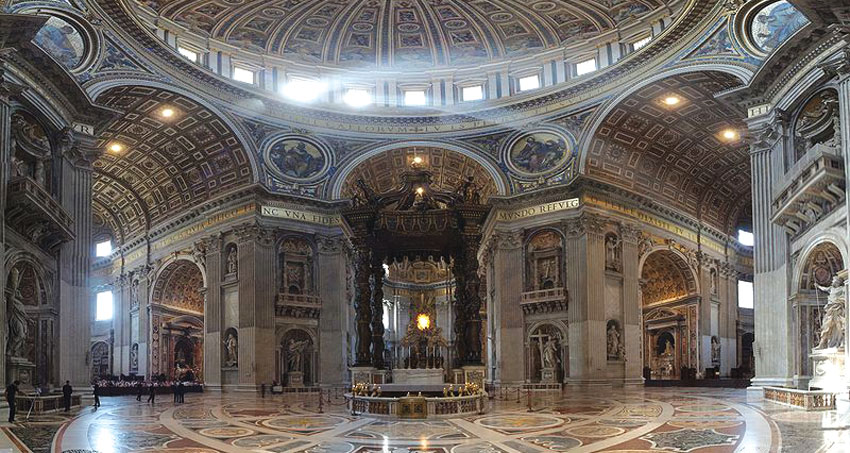
More specifically, the dome is energy–efficient for many reasons. Its decreased surface area requires less building materials. Exposure to cold in the winter and heat in the summer is decreased because, being spherical, there is the least surface area per unity of volume per structure. The concave interior creates a natural airflow that allows the hot or cool air to flow evenly throughout the dome with the help of return air ducts. Extreme wind turbulence is lessened because the winds that contribute to heat loss flow smoothly around the dome. It acts like a type of giant down-pointing headlight reflector and reflects and concentrates interior heat. This helps to prevent radiant heat loss.
World's Famous Domes
Georgia Dome, Georgia, USA
In March 1992, when the Georgia Dome was completed, it became the largest cable-supported dome in the world. The 7-story building covers 8.9 acres, encompasses 1.6 million square feet, and can seat 71,250 spectators. The stadium is oval and the seats are set relatively close to the field. The Teflon/fiberglass roof provides enclosure while admitting natural light.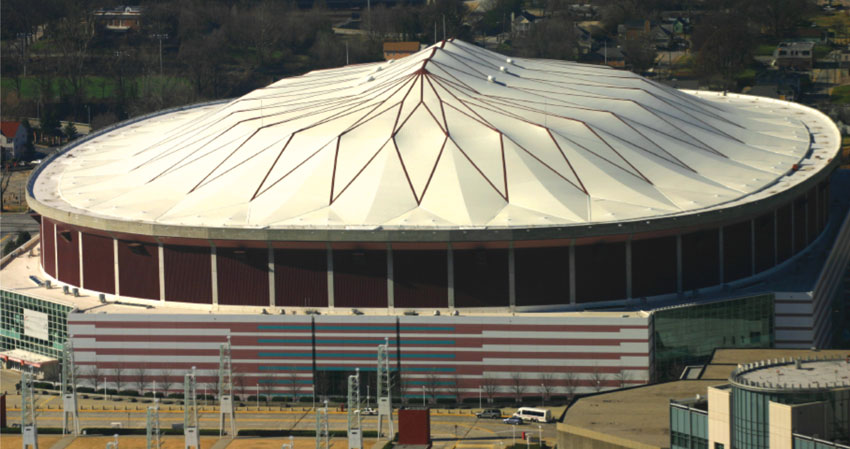
The famous domed roof of the Georgia Dome, made of 130 Teflon-coated fiberglass panels is quite an engineering marvel. The cables that support the roof are 11.1 miles long.
The roof weighs just 68 pounds, is strong enough to support a fully loaded pickup truck. This is due to a fundamental engineering "Tensegrity." Tensegrity is a complex sequence of triangles. Short, vertical posts carry the weight of the Georgia Dome roof. The posts are held in place by pre-stretched cables, attached to the top and bottom of each post with steel pins and welded connections. The cables pull on the posts with equal force in all directions to form strong, taut triangles. The cable roof is secured to a reinforced 2,750-foot concrete ring which rests on slide-bearing Teflon pads along the perimeter of the dome that allow the roof to flex slightly during high winds.
This is the precise dance of pulling and pushing that allows tensegrity roofs like the Georgia Dome to soar far above the stands and the playing field below.
The Georgia Dome contains 110,000 cubic yards of concrete and 8,300 tons of reinforced steel — more than the weight of iron and steel used in the Eiffel Tower. The dome is as tall as a 29 story building.
The Millennium Dome, London
Designed by architect Richard Rogers and engineered by Buro Happold, The Millennium Dome is a celebratory, iconic, non-hierarchical structure offering a vast, flexible space. Commissioned to mark the beginning of the new Millennium, this large dome-shaped building is located on the Greenwich Peninsula in south-east London, England.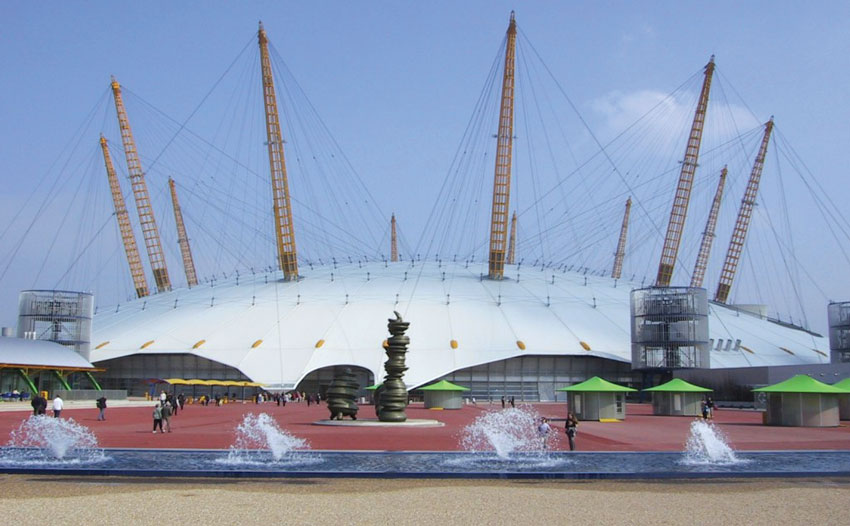
Externally the building appears as a large white marquee with twelve 100 m-high yellow support towers, one for each month of the year, or each hour of the clock face, representing the role played by Greenwich Mean Time. It has become one of the United Kingdom's most recognizable landmarks.
Providing 100,000m² of enclosed space (2.2 million cubic metres), this structure is 365m in diameter, with a circumference of one kilometre and a maximum height of 50 m. The Dome is suspended from a series of twelve 100m steel masts, held in place by more than 70km of high-strength steel cable which in turn support the Teflon-coated glass fibre roof.
The canopy is made of PTFE-coated glass fibre fabric, a durable and weather-resistant plastic. The entire roof structure weighs less than the air contained within the building. Although referred to as a dome, it is not strictly one as it is not self-supporting, but is a mast-supported, dome-shaped cable network.
Hagia Sophia
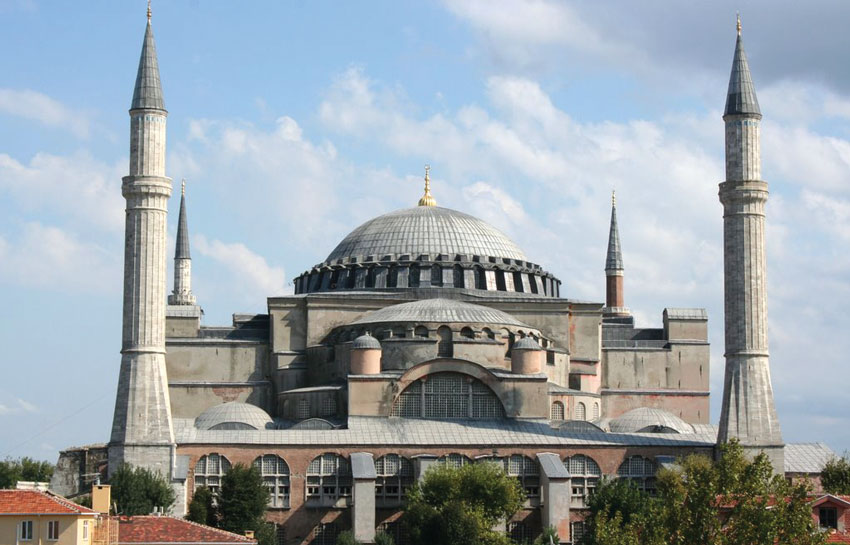
The dome of Hagia Sophia is the fourth largest cathedral in the world. It is famous for the mystical quality of light that reflects everywhere in the interior of the nave, which gives the dome the appearance of hovering above the nave. This design is possible because the dome is shaped like a scalloped shell or the inside of an umbrella with ribs that extend from the top of the dome down to the base. These ribs allow the weight of the dome to flow between the windows, down the pendentives, and ultimately to the foundation.
Pantheon, Rome, Italy
Pantheon (Greek word meaning "to honor all Gods) is a dome-shaped building in Rome." When Roman Emperor Hadrian decided to build a monument to reflect the power of his empire, he built a dome —but not just any dome. Hadrian constructed a building out of bricks and concrete with a dome that was bigger and more extraordinary than anything anyone had ever seen before. The enormous building, called the Pantheon, was built as a temple to all the Roman gods almost 2,000 years ago. It still exists today, almost entirely in its original form.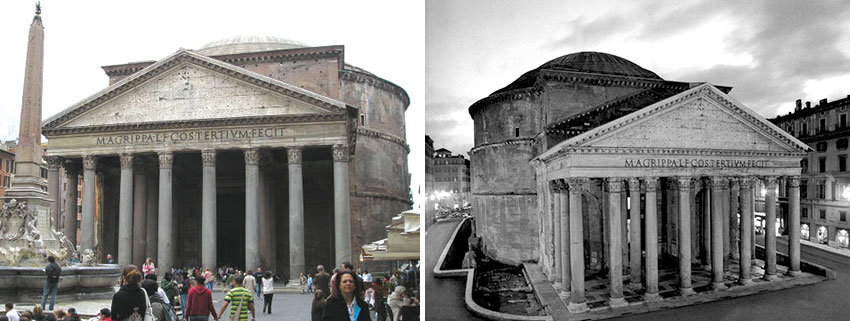
The Pantheon is remarkable for its size, its construction, and its design. The enormous dome stretches 142 feet in diameter; that's the same as the distance from the Statue of Liberty's sandals to her torch! Given the dome's size and weight, Hadrian's engineers had to find ways to lighten the heavy structure. They scooped out 140 waffle-like depressions, called coffers, in five rows around the dome's base to eliminate some masonry and reduce the dome's weight. They also carved an opening, called an oculus, at the top of the dome, which reduced some mass and created a daily light show for which the Pantheon is famous.
The oculus, or "eye" of the dome, is 27 feet wide — five teenagers could stretch across the hole!
At its base, the dome is 23 feet thick, but only two feet thick at the rim of the oculus.
SkyDome, Toronto, Canada
The SkyDome, now known as the Rogers Centre, and constructed in 1989, is the first and only stadium to have a fully retractable roof. Unlike any other sports stadium, the roof of the SkyDome separates into pieces and disappears from sight in less than 20 minutes, completely uncovering the playing field and more than 91 percent of the seats.
The roof is made of four massive steel panels; one panel is fixed, and the other three slide on a system of steel tracks. Each panel is made from a pattern of steel trusses with a corrugated steel shell and a weatherproof plastic membrane. Opening the roof requires that two panels slide over each other and under a fixed panel behind center field. A third panel, which starts behind home plate, rotates on a circular rail. Despite its enormous weight — the whole roof weighs more than 11,000 tons — the roof panels slide at a whopping rate of 71 feet per minute!
Today, the SkyDome is home to the American League's Toronto Blue Jays and the Canadian Football League's Toronto Argonauts.
United States Capitol, Washington, D.C., USA
The United States Capitol dome is the massive dome situated above the United States Capitol which reaches upwards to 288 feet (88 m) in height. This architecturally impressive dome was designed by Thomas U. Walter, the fourth Architect of the Capitol, and constructed between 1855 and 1866. The Capitol, which was started in 1793, has been through many construction phases.
Walter designed a double dome — a small dome inside a taller dome — that created the illusion of height. The tall exterior dome is really a thin shell, supported by a ring of 36 curved iron ribs. Underneath is a smaller dome, open at the top like the Pantheon. Though it looks like it's made of stone, every bit of the Capitol dome is made of cast iron. The dome was finally completed in December 1863, and it stands today as a monument to the American people and their government.
The United States Capitol building contains approximately 540 rooms and has 658 windows (108 in the dome alone) and approximately 850 doorways. The dome was constructed with 8,909,200 pounds of iron. The bronze Statue of Freedom is the crowning feature of the dome of the United States Capitol. It stands 19 feet 6 inches tall and weighs approximately 15,000 pounds.















